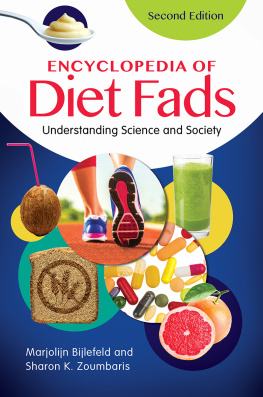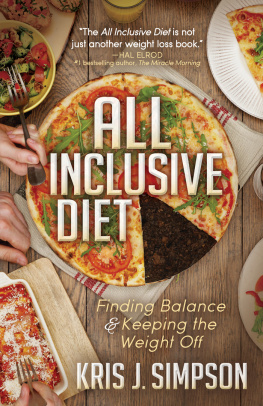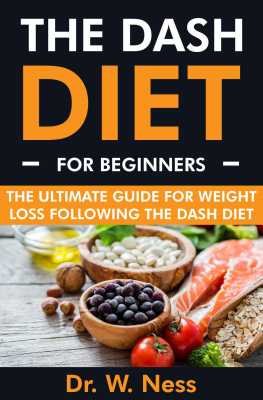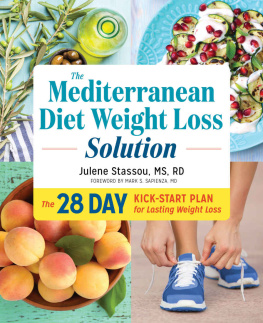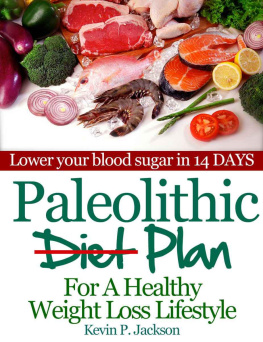Encyclopedia
of Diet Fads,
Second Edition
Encyclopedia of Diet Fads, Second Edition
Understanding Science and Society
Marjolijn Bijlefeld and Sharon K. Zoumbaris
Copyright 2015 by ABC-CLIO, LLC
All rights reserved. No part of this publication may be reproduced, stored in a retrieval system, or transmitted, in any form or by any means, electronic, mechanical, photocopying, recording, or otherwise, except for the inclusion of brief quotations in a review, without prior permission in writing from the publisher.
Library of Congress Cataloging-in-Publication Data
Bijlefeld, Marjolijn, 1960
Encyclopedia of diet fads: understanding science and society / Marjolijn Bijlefeld and Sharon K. Zoumbaris. Second edition.
pages cm
Includes bibliographical references and index.
ISBN 978-1-61069-759-0 (hard copy: alk. paper)
ISBN 978-1-61069-760-6 (ebook) 1. Reducing dietsEncyclopedias.
2. Weight lossEncyclopedias. I. Zoumbaris, Sharon K., 1955 II. Title.
RM222.2.B535 2015
613.2'503dc23 2014024609
ISBN: 978-1-61069-759-0
EISBN: 978-1-61069-760-6
19 18 17 16 15 1 2 3 4 5
This book is also available on the World Wide Web as an eBook.
Visit www.abc-clio.com for details.
Greenwood
An Imprint of ABC-CLIO, LLC
ABC-CLIO, LLC
130 Cremona Drive, P.O. Box 1911
Santa Barbara, California 93116-1911
This book is printed on acid-free paper 
Manufactured in the United States of America
Contents
Dukan, Paleo, Master Cleanse, Subway, P90X, Baby Food, Biggest Loserfad diets appear like clockwork, each with its own set of rules. What will Americans do to lose weight? Just about anything, it seems. When we first wrote this book, there was a variety of quick and easy fixes that had flooded the market. Now, a decade later, there are even more. Many of these products or devices are costly; some are not safe; and some are simply outrageous. Consider a bristle brush to scrub fat away or magic weight-loss earrings, or try pretending you live in the country of France.
Dietitians and physicians will say there is only one fundamental combination to help most people lose weight: eat less and exercise more. Some other timehonored suggestions for real success include eating regular meals instead of skipping meals, especially breakfast. Keeping a food journal and writing down the days food total is another helpful behavior. And all of these are free. Through its Dietary Guidelines for Americans, the DASH diet, and the restyled MyPlate, the government recommends an assortment of healthy food choices that include vegetables, fruits, grains, fat-free or low-fat milk products, fish, lean meat, poultry, and beans.
Americans also have more access to information now than they did even a decade ago. The Internet and a variety of apps for smartphones make it possible to look up fat and calorie content in foods in seconds. Many restaurants and most fast-food restaurants provide nutrition information on their menu items. And the government has recommended the first major overhaul to the Nutrition Facts labels that appear on packaged foods.
This updated volume introduces a wide variety of weight-loss means and methods, new and old. Some entries describe a particular diet; some describe a support group or service; and some entries focus on the people who have changed the way Americans eat. It combines advice from nutritionists and physicians, weight-loss gurus, and government and private agencies whose role it is to oversee the evergrowing weight-loss industry.
No doubt, there will be disagreements about the effectiveness of a certain diet plan. One person may swear by a high-protein diet like Paleo, whereas another may swear by a plan that restricts or permits only certain foods. Entries may contain a description of the diet plan and arguments from those who say it is unsafe.
While weight loss may not seem like a topic of debate or tremendous confusion, yet here are distinct and seemingly opposing voices. An August 13, 2013, article in Psychology Today cited a study that found that 52 percent of Americans found it easier to do their taxes than to figure out how to eat healthfully. That might help explain the draw of diets, especially those that promise incredible results in days or with no real effort required of the dieter. But these diets have shown little overall weight-loss success for many Americans. However, there is some good news. There is new evidence that obesity rates among preschool children have started to drop. Are those numbers a sign that programs, like the high-profile Lets Move initiative from First Lady Michelle Obama, are making a difference? Time will tell whether this downturn is the beginning of a trend or simply a little dip in the ongoing increase in obesity rates.
Who or what is at fault in the first place? Researchers are now looking at antibiotics and our high consumption of these drugs as a possible cause for some of our increasing girth. Consider that for decades, agriculture used antibiotics to pack the pounds on everything from chickens to beef cattle. There were early experiments in the 1950s to see if antibiotics could stimulate growth in young children. Yes, they did. Now, as the medical community works to stop the overuse of antibiotics, which has led to a growth in antibiotic-resistant bacteria, scientists are wondering if people have been fattened up not just by diet and lifestyle, but also by exposure to so many drugs.
While scientists continue those studies, what comes next? For most people, small steps can add up. Moderation in food consumption, by cutting down on sweets, fats, and carbohydrates, may do the trick. An increase in the level of daily physical activity will not only burn additional calories, but it can also provide some energya positive cycle. In the long run, this combination results in longlasting weight maintenance, not just a quick-fix weight loss.
In all cases, before starting a diet to lose weight aggressively, consult a doctor. An extreme or a rapid weight loss can have severe consequences. And realize, too, that losing weight is just one part of healthy living. Maintaining a good weight and a diet that provides enough energy to feel good and be active is a lifelong goal.
Early History of Dieting and Fad Diets
In dieting, as in life, everybody wants a quick answer, a quick meal, and a quick success. The elusive promise of quick weight loss is the driving force behind the popularity of best-selling books, powders, liquids, pills, and programs. Each year these new fad diets appear on the sceneeverything from high-protein, low-carbohydrate plans to fasting and liquid meals. And Americansteens includeddesperate to lose weight for decades embraced them enthusiastically. However, that trend is now slowly changing as research suggests fewer Americans are on a diet. Some 23 percent of women in 2012 were dieting compared to the 35 percent on diets in 1992. While numbers for obesity have slowed, overall childhood obesity has more than doubled in children and quadrupled in adolescents in the past 30 years, according to the Centers for Disease Control and Prevention (CDC).
These sobering statistics go a long way toward explaining why the lure of quick, easy weight-loss schemes is so hard to resist. Unfortunately, fad diets arent healthy and dont work for the long haul. Consider this: 95 percent of all dieters will regain their lost weight in one to five years; 35 percent of normal dieters progress to pathological dieting or full-blown eating disorders; and Americans spend more than $60 billion annually to try and lose pounds, on everything from weight-loss programs and diet-related products to gym memberships.

